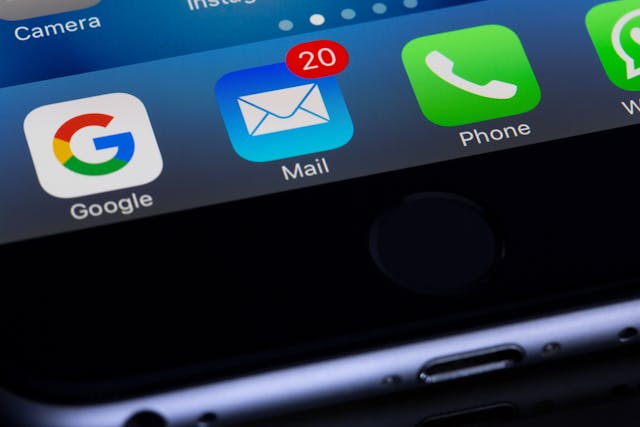TL;DR / Quick Takeaways:
- AI is powerful for email marketing—but only if it sounds human
- Voice and tone matter more than fancy automation
- Personalization is your secret weapon to avoid “spammy” vibes
- Tools exist that blend AI efficiency with your authentic brand voice
- The best email marketing with AI doesn’t replace you—it amplifies you
Why “Sounding Human” Still Matters in Email Marketing with AI
We’ve all gotten those emails that sound… off. They’re technically correct, grammatically perfect, and yet they scream “a robot wrote this.” And if you’re like most people, those emails go straight to trash—or worse, the spam folder.
Here’s the irony: We’re living in the age of AI-powered everything, yet the emails that actually get opened, read, and clicked are the ones that feel personal. Human. Real.
The good news? Email marketing with AI doesn’t have to equal robotic. With the right strategy, AI can help you scale your email campaigns without losing the personal touch that makes subscribers actually want to hear from you.
The data backs this up: According to McKinsey, personalized emails deliver 6x higher transaction rates. And Campaign Monitor found that emails with personalized subject lines are 26% more likely to be opened.
Translation? Voice matters. Authenticity matters. Connection matters.
So let’s break down how to master email marketing with AI while still sounding like you—not like a corporate chatbot having an identity crisis.
The Email Marketing with AI Paradox (And How to Avoid It)
Here’s what’s happening right now in inboxes everywhere:
Scenario A: Business owners discover AI email tools, get excited, let AI write everything, hit send, and wonder why their open rates tank.
Scenario B: Business owners are scared of AI, avoid it completely, spend 10 hours a week writing emails manually, and burn out.
Neither approach works.
The sweet spot? Using email marketing with AI as your efficiency amplifier while keeping your unique voice front and center. Think of AI as your writing assistant who needs guidance, not your replacement writer who takes over completely.
Step 1: Define Your Brand Voice Before You Touch Any AI Tool
Here’s the truth: AI is like an intern on their first day. It’s eager, capable, and ready to help—but it needs clear instructions. If you don’t define your voice upfront, AI will default to generic “marketing speak” that sounds like every other promotional email.
Before you dive into email marketing with AI, answer these questions:
- Is my brand more casual or professional?
- Do I use humor, or keep it strictly business?
- What phrases or words do I say often?
- What words would I NEVER use?
Create a simple voice guide—just a one-pager with personality traits (e.g., friendly, witty, professional), your go-to words and phrases, and words you’d never use. This becomes your instruction manual for AI.
Once you have this guide, you can paste it into ChatGPT or Jasper before every email request: “Write this email in the following voice: [paste your guide].” Game changer.
🔗 Check out Mailchimp’s Brand Voice Guide for inspiration on structuring yours.
Step 2: Use AI as Your Drafting Partner, Not Your Ghostwriter
This is where most people go wrong with email marketing with AI. They treat it like a magic “write my email” button and send whatever comes out first.
Here’s the better workflow:
Let AI brainstorm: Ask for 10 subject line ideas or 5 different angles for your email topic.
Let AI draft: Get the structure, flow, and basic messaging down.
You humanize: Add personal anecdotes, humor, specific details only you would know, and personality quirks.
Use AI to polish: Ask it to shorten paragraphs, make CTAs more engaging, or give you variations.
See the difference? AI handles the heavy lifting and idea generation. You handle the soul and authenticity.
Step 3: Master the Art of Conversational Tone
AI sometimes writes like it’s submitting a college thesis. Your job? Make it sound like you’re texting a friend (who also happens to be your customer).
Let’s look at real examples:
❌ AI Default:
“We are pleased to announce the launch of our innovative new product that will revolutionize your workflow efficiency.”
✅ Human Edit:
“Okay, we’ve been working on something pretty cool. And it’s finally ready. This tool is about to save you hours every week.”
❌ AI Default:
“Take advantage of this limited-time promotional offer to maximize savings.”
✅ Human Edit:
“Heads up—this deal disappears Friday at midnight. No pressure, but… actually, a little pressure. It’s that good.”
Notice the difference? One feels stiff, the other feels human. When editing AI-generated emails, ask yourself: Would I actually say this out loud? Does this sound like I’m talking TO someone, not AT them?
🔗 Copyhackers has excellent resources on writing conversational copy that converts.
Step 4: Personalize Beyond “Hi [First Name]”
Here’s where email marketing with AI truly shines. AI can help you scale personalization way beyond the basics everyone’s doing.
Basic personalization is using first names and company names. Everyone does this.
Behavioral personalization is where things get interesting:
- “We noticed you downloaded our guide on content marketing—here’s a tool that makes it even easier.”
- “You’ve been checking out our pricing page. Questions? Hit reply and let’s chat.”
- “Since you opened our last 5 emails about social media, thought you’d want this Instagram strategy.”
Contextual personalization takes it further:
- Location-based: “Hey Chicago crew—we’re hosting a local meetup next month.”
- Time-based: “It’s Monday morning. Here’s your weekly dose of motivation and a strong coffee emoji ☕”
- Lifecycle stage: “You’ve been with us for 6 months! Here’s what most people do next…”
When personalization goes deeper than surface level, readers feel like you’re talking to them specifically—not blasting the same message to 10,000 people. AI tools like Mailchimp, HubSpot, and Klaviyo make this kind of segmentation and personalization scalable.
Step 5: Automate Smart, But Don’t Set It and Forget It
One of the biggest mistakes in email marketing with AI? Setting up automated sequences and never touching them again.
Your business evolves. Your voice evolves. References get outdated. What was funny in January might be cringe by December.
Every few months, review your automated emails and ask:
- Do these still sound like me?
- Are these examples still current?
- Do these jokes/references still land?
- Which emails have low open rates that need better subject lines?
- Where are people dropping off?
AI makes testing incredibly easy. Use it to A/B test subject lines, email length, and CTAs. Tools like Seventh Sense can even optimize when each subscriber gets your email based on their individual behavior patterns.
🔗 HubSpot’s Guide to Email Automation has great frameworks for ongoing optimization.
Step 6: The Best Tools for Email Marketing with AI That Keep Things Human
Not all AI tools are created equal. Here are some designed specifically to help you maintain your human voice:
For Writing & Tone:
- ChatGPT / Claude – Best for custom prompts and drafting (Free or $20/mo)
- Jasper AI – Great for brand voice training and templates (Starting at $39/mo)
- Grammarly – Tone detection and readability checks (Free, Premium $12/mo)
For Sending & Optimization:
- Mailchimp – AI features include subject line helper and send-time optimization (Free up to 500 contacts)
- HubSpot – AI email writer with CRM integration (Free CRM, Marketing Hub from $45/mo)
- Klaviyo – Predictive analytics for e-commerce (Free up to 250 contacts)
For Advanced Personalization:
- Seventh Sense – Send-time optimization based on individual behavior (Starting at $64/mo)
- Phrasee – AI-generated subject lines trained on real campaigns (Custom pricing)
The key is choosing 2-3 tools that work together rather than trying to use every AI tool that exists. Find a full list of AI tools in our toolkit that every entrepreneur should know about.
Real Talk: Let’s Get Honest About Email Marketing with AI
Confession time: Have you ever written an email, reread it, and thought, “Yikes… this makes me sound like I’m selling vacuum cleaners door-to-door in 1987”?
You’re not alone. We’ve all sent emails that made us cringe five minutes later.
Here’s what I’ve learned after years of experimenting with email marketing with AI: The technology is only as good as the strategy behind it.
AI won’t magically make you a better writer. It won’t automatically know your audience. And it definitely won’t build relationships for you.
But here’s what it WILL do:
✅ Save you time so you can send emails consistently instead of when you “find time”
✅ Generate ideas when you’re staring at a blank screen at 11 PM
✅ Test variations faster than you could manually
✅ Scale personalization beyond what’s humanly possible
✅ Optimize timing so your emails land when people actually read them
The trick is remembering that your subscribers are people, not data points. They can smell inauthenticity from a mile away. They know when they’re getting a mass blast vs. when someone actually cares.
AI is a tool—like a microphone. It amplifies your voice, but it won’t magically make you Beyoncé. You’ve got to bring the voice first.
So don’t stress if your first few attempts at email marketing with AI feel a little stiff or awkward. With practice and a solid brand voice guide, you’ll find your sweet spot. The businesses winning at email marketing with AI aren’t the ones using every tool and automation possible. They’re the ones who’ve figured out how to blend efficiency with authenticity.
They know their voice. They guide their AI tools with clear instructions. They edit ruthlessly. They test constantly. And most importantly, they never forget that there’s a real person on the other end of that email.
Putting It All Together
Your subscribers don’t care if AI helped you write the email. They care if it resonates with them.
So here’s your simple formula for email marketing with AI that sounds human:
- Define your brand voice before you write anything
- Use AI for drafts, not finished work
- Edit for conversational tone – make it sound like you
- Personalize beyond first names – use behavior and context
- Automate strategically, but review regularly
- Choose tools that emphasize human voice
Done right, AI doesn’t replace your voice—it helps you scale it. It takes the time-consuming parts (drafting, testing, optimizing) and makes them faster, so you can focus on the human parts (strategy, storytelling, connection).
Go ahead—use AI to draft faster, personalize smarter, and test more efficiently. Just make sure that when someone opens your email, they hear YOU, not a robot trying to sound human.
Ready to Level Up Your Email Marketing with AI?
👉 Subscribe today and never miss a guide on marketing smarter with AI. You’ll get practical tips, tool recommendations, and strategies that actually work—no robots, just real advice.
P.S. — Already using AI for emails? What’s your biggest challenge with keeping things human? I’d love to hear from you. – hello@wemanagemarketing.com




